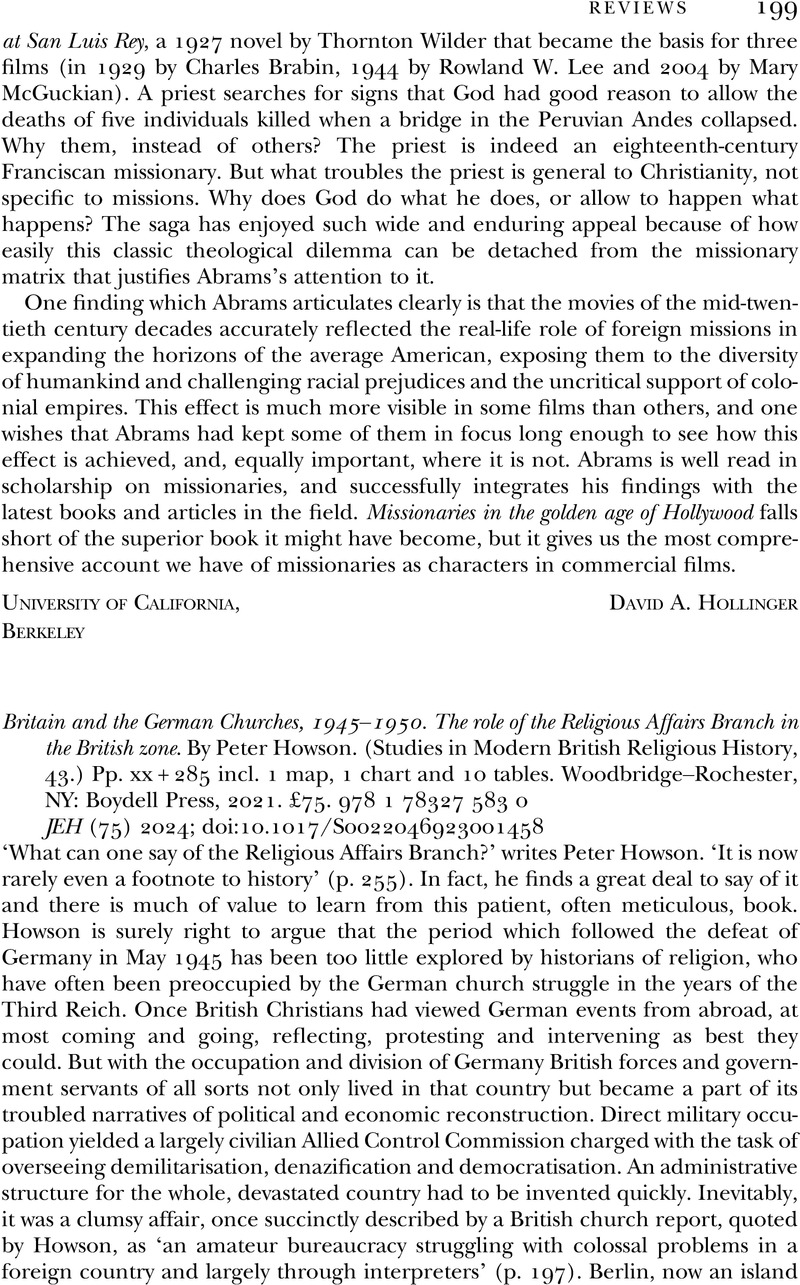No CrossRef data available.
Article contents
Britain and the German Churches, 1945–1950. The role of the Religious Affairs Branch in the British zone. By Peter Howson. (Studies in Modern British Religious History, 43.) Pp. xx + 285 incl. 1 map, 1 chart and 10 tables. Woodbridge–Rochester, NY: Boydell Press, 2021. £75. 978 1 78327 583 0
Review products
Britain and the German Churches, 1945–1950. The role of the Religious Affairs Branch in the British zone. By Peter Howson. (Studies in Modern British Religious History, 43.) Pp. xx + 285 incl. 1 map, 1 chart and 10 tables. Woodbridge–Rochester, NY: Boydell Press, 2021. £75. 978 1 78327 583 0
Published online by Cambridge University Press: 20 December 2023
Abstract
An abstract is not available for this content so a preview has been provided. Please use the Get access link above for information on how to access this content.

- Type
- Reviews
- Information
- Copyright
- Copyright © Cambridge University Press 2023



